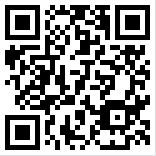 Originally from Japan, QR codes are computer readable images that code information such as a URL and allow QR-enabled devices, such as mobile phones, easy and fast access to web-sites.
Originally from Japan, QR codes are computer readable images that code information such as a URL and allow QR-enabled devices, such as mobile phones, easy and fast access to web-sites.
Initially created in 1994 for tracking parts in vehicle manufacturing, QR Codes are now used in a much broader context, including both commercial tracking applications and convenience-oriented applications aimed at mobile phone tagging. QR Codes storing addresses and URLs may appear in magazines, on signs, buses, business cards, or just about any object that users might need information about. Users with a camera phone equipped with the correct software can scan the image of the QR Code causing the phone’s browser to launch and redirect to the programmed URL.
It’s then not hard to create a number of different QR codes, say for different campaigns, and allow pinpoint source tracking.
It’s a neat solution to guiding people to places on the ‘net and doesn’t suffer some of the problems that barcodes have and also, rather cleverly in my view, has rather neat error-handling built it to cope with crappy phone cameras, poor light or partial image degradation.
